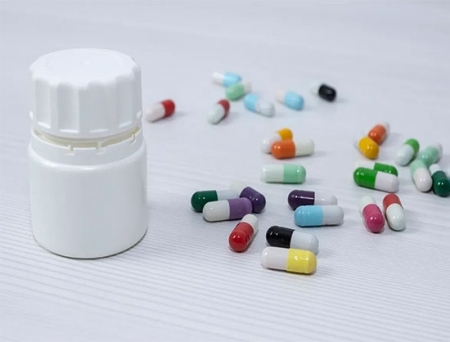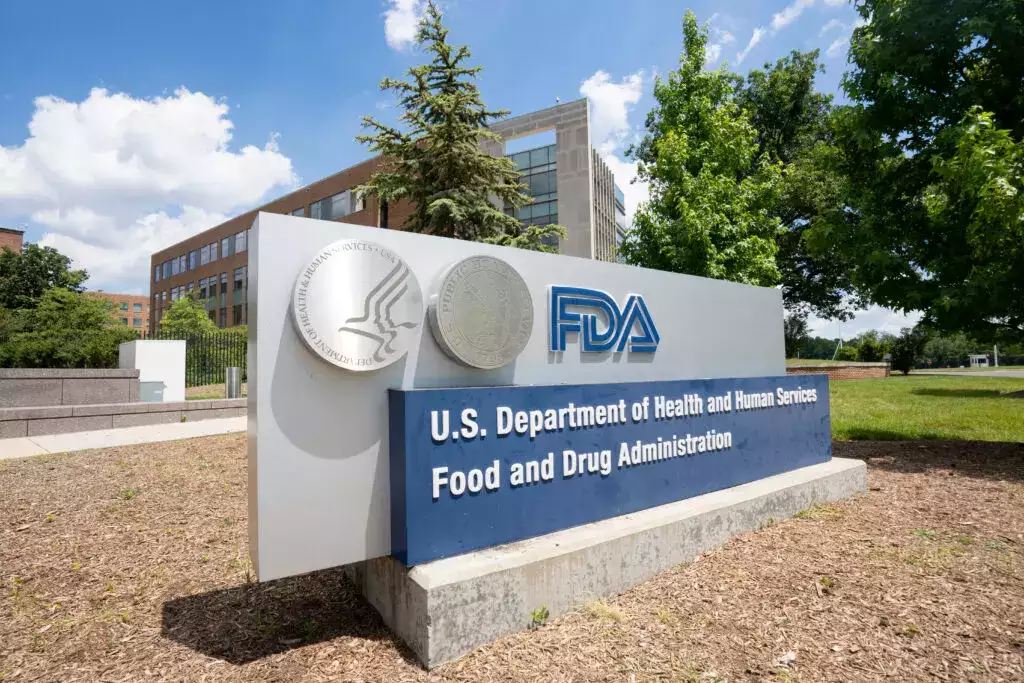预约演示
更新于:2025-08-29
Bausch Health US LLC
更新于:2025-08-29
概览
标签
皮肤和肌肉骨骼疾病
感染
神经系统疾病
小分子化药
非降解型分子胶
单克隆抗体
疾病领域得分
一眼洞穿机构专注的疾病领域
暂无数据
技术平台
公司药物应用最多的技术
暂无数据
靶点
公司最常开发的靶点
暂无数据
| 排名前五的药物类型 | 数量 |
|---|---|
| 小分子化药 | 33 |
| 非降解型分子胶 | 1 |
| 单克隆抗体 | 1 |
关联
35
项与 Bausch Health US LLC 相关的药物作用机制 50S subunit抑制剂 [+1] |
在研适应症 |
非在研适应症- |
最高研发阶段批准上市 |
首次获批国家/地区 美国 |
首次获批日期2023-10-20 |
靶点 |
作用机制 IL-17RA拮抗剂 |
在研机构 |
原研机构 |
最高研发阶段批准上市 |
首次获批国家/地区 日本 |
首次获批日期2016-07-04 |
作用机制 DNA-指导DNA聚合酶抑制剂 [+1] |
在研适应症 |
非在研适应症- |
最高研发阶段批准上市 |
首次获批国家/地区 美国 |
首次获批日期2009-07-31 |
100 项与 Bausch Health US LLC 相关的临床结果
登录后查看更多信息
0 项与 Bausch Health US LLC 相关的专利(医药)
登录后查看更多信息
4
项与 Bausch Health US LLC 相关的文献(医药)2023-01-01·Journal of pain research
Impact of Patient Subgroups on the Efficacy and Safety of Methylnaltrexone for Opioid-Induced Constipation in Patients with Advanced Illness.
Article
作者: Shah, Eric D ; Stambler, Nancy ; Slatkin, Neal E ; Israel, Robert J ; Mehta, Neel
Purpose:
We evaluated the impact of baseline patient characteristics on safety and efficacy of methylnaltrexone, a peripherally acting µ-opioid receptor antagonist, in patients with advanced illness with opioid-induced constipation (OIC).
Patients and Methods:
This analysis pooled data from 2 randomized, double-blind, placebo-controlled studies (study 302: NCT00402038; study 4000: NCT00672477) in patients with advanced illness, including cancer, and OIC. Patients were randomized to receive subcutaneous methylnaltrexone (study 302: 0.15 mg/kg; study 4000: 8 or 12 mg based on weight) or placebo every other day for 2 weeks. The proportions of patients achieving rescue-free laxation within 4 or 24 hours after the first dose of study drug were assessed in patient subgroups stratified by baseline age, Eastern Cooperative Oncology Group (ECOG) performance status, cancer status, laxative type, and opioid requirement. Treatment-emergent adverse events (TEAEs) were evaluated.
Results:
Overall, 363 patients were included in this analysis (methylnaltrexone, 178; placebo, 185). Mean (SD) age was 66.3 (13.7) years and 48.5% were men overall. A significantly greater proportion of patients receiving methylnaltrexone versus placebo achieved rescue-free laxation within 4 hours (111/178 [62.4%] vs 31/185 [16.8%]; P<0.0001) and 24 hours (135/178 [75.8%] vs 81/185 [43.8%]; P<0.0001) of the first dose. These trends were consistent across all subgroups. Most patients experienced ≥1 TEAE in the overall population (methylnaltrexone, 82.1%; placebo, 76.2%), which remained consistent when stratified by baseline characteristics. More than half of TEAEs were gastrointestinal in nature. Abdominal pain was more common in patients receiving methylnaltrexone than placebo across baseline characteristic subgroups.
Conclusion:
Methylnaltrexone treatment was superior to placebo in achieving rescue-free laxation within 4 and 24 hours after the first dose, irrespective of patients' cancer status, baseline ECOG performance status, or baseline opioid or laxative use. The methylnaltrexone safety profile remained consistent across baseline characteristic subgroups.
2022-08-18·The Journal of dermatological treatment
Efficacy and tolerability of three topical acne treatments by body mass index: post hoc analysis including overweight and obese patients
Article
作者: Green, Lawrence ; Pillai, Radhakrishnan ; Guenin, Eric ; Cook-Bolden, Fran E. ; Bhatt, Varsha ; Keri, Jonette ; Kircik, Leon H. ; Baldwin, Hilary ; Werschler, William Philip
BACKGROUND:
Acne prevalence may be higher in overweight/obese individuals, potentially due to hormonal, inflammatory, and/or dietary factors. However, the effects of body mass index (BMI) on topical acne treatments are largely unknown.
METHODS:
Post hoc analyses of changes in inflammatory/noninflammatory lesions and treatment success were conducted using phase 3 data: clindamycin phosphate/benzoyl peroxide (CP/BPO) 1.2%/3.75% gel (NCT01701024); tretinoin 0.05% lotion (NCT02965456 and NCT02932306; pooled); and tazarotene 0.045% lotion (NCT03168321 and NCT03168334; pooled). Data were analyzed by BMI subgroups: <25kg/m2 (underweight-to-normal), 25-<30kg/m2 (overweight), and ≥30kg/m2 (obese).
RESULTS:
Among participants analyzed (CP/BPO = 495; tretinoin = 1,636; tazarotene = 1,612), ∼20-25% were overweight and 15-20% were obese. At week 12, mean percent changes from baseline in inflammatory lesions were: CP/BPO (overweight: -63.2%, obese: -56.0%); tretinoin (-57.6%, -53.1%); tazarotene (-59.9%, -56.8%). Mean changes in noninflammatory lesions were: CP/BPO (-54.2%, -50.8%); tretinoin (-51.6%, -44.9%); tazarotene (-56.7%, -54.6%). Treatment success rates with active treatment ranged from 16.2% to 33.5% across BMI groups.
CONCLUSIONS:
CP/BPO 1.2%/3.75% gel, tretinoin 0.05% lotion, and tazarotene 0.045% lotion were all effective in reducing acne lesions by ≥45% in overweight/obese patients with moderate-to-severe acne, comparable to the underweight-to-normal group. Efficacy of these topical acne treatments is not greatly impacted by BMI and may be affected more by the formulation.
2022-05-01·Journal of clinical gastroenterology3区 · 医学
An Open-label, Multicenter Study to Assess the Efficacy and Safety of a Novel Probiotic Blend in Patients With Functional Gastrointestinal Symptoms
3区 · 医学
Article
作者: Cash, Brooks D. ; Franklin, Howard ; Moftah, Karim ; Harris, Lucinda A.
Goal::
A novel 5-strain (Bl-04, Bi-07, HN019, NCFM, and Lpc-37) probiotic blend was developed and its safety and efficacy were evaluated in patients with functional gastrointestinal (GI) symptoms.
Background::
These strains administered together have not previously been investigated.
Study::
Patients aged 18 to 75 years with functional GI symptoms were eligible for inclusion in a single-arm, open-label, multicenter study (NCT04155801). An oral capsule containing the novel probiotic blend was administered once daily for 30 days. The primary efficacy endpoint was patient-reported improvement in overall GI well-being at day 30. Secondary efficacy endpoints included changes in GI symptoms assessed using the GI Health Symptom Questionnaire. Incidence of treatment-emergent adverse events was recorded at all visits.
Results::
Of 188 enrolled patients, 72.3% were female and mean (SD) age was 44.1 (13.4) years. At day 30, 85.1% of patients achieved the primary endpoint, a positive response signifying improvement in overall GI well-being. Improvements from baseline were reported at day 30 in diarrhea frequency (baseline frequency≥3 to 4 d/wk) and severity (baseline severity≥5/10) for 75.8% and 87.3% of patients, respectively. Over the same time period, constipation frequency (baseline frequency≥3 to 4 d/wk) and severity (baseline severity≥5/10) improved in 73.6% and 80.4% of patients, respectively. Most patients reported improvements at day 30 in frequency and severity of straining, urgency, abdominal pain/discomfort, bloating, and distention. Improvements reported at day 30 were generally observable at day 14. No safety signals were identified.
Conclusion::
A novel 5-strain probiotic blend improved functional GI symptoms and was safe.
21
项与 Bausch Health US LLC 相关的新闻(医药)2024-11-11
Alembic Pharmaceuticals has secured Final Approval from the US Food & Drug Administration (USFDA) for its Abbreviated New Drug Application (ANDA) for Diltiazem Hydrochloride Extended-Release Capsules USP, 120 mg, 180 mg, 240 mg, 300 mg, and 360 mg.
The approved ANDA is therapeutically equivalent to the reference listed drug product (RLD), Cardizem CD Extended-Release Capsules, 120 mg, 180 mg, 240 mg, 300 mg, and 360 mg, of Bausch Health US, LLC. Diltiazem Hydrochloride Extended-Release Capsules USP are indicated for the treatment of hypertension.
Diltiazem hydrochloride may be used alone or in combination with other antihypertensive medications. It is also indicated for the management of chronic stable angina and angina due to coronary artery spasm. Refer label for a detailed indication.
Diltiazem Hydrochloride Extended-Release Capsules USP, 120 mg, 180 mg, 240 mg, 300 mg, and 360 mg have an estimated market size of USD 105.3 million for twelve months ending June 2024 according to IQVIA.
Alembic has a cumulative total of 218 ANDA approvals (191 final approvals and 27 tentative approvals) from USFDA.

上市批准申请上市
2024-11-11
Mumbai:
Alembic Pharmaceuticals
Limited (Alembic) announced that it has received final approval from the US Food & Drug Administration (US FDA) for its abbreviated new drug application (ANDA) for
Diltiazem Hydrochloride Extended-Release Capsules
USP, 120 mg, 180 mg, 240 mg, 300 mg, and 360 mg.
The approved ANDA is therapeutically equivalent to the reference listed drug product (RLD), Cardizem CD
Extended-Release Capsules
, 120 mg, 180 mg, 240 mg, 300 mg, and 360 mg, of Bausch Health US, LLC. Diltiazem Hydrochloride Extended-Release Capsules USP are indicated for the treatment of hypertension. Diltiazem hydrochloride may be used alone or in combination with other antihypertensive medications. It is also indicated for the management of chronic stable angina and angina due to coronary artery spasm. Refer label for a detailed indication.
Diltiazem Hydrochloride Extended-Release Capsules USP, 120 mg, 180 mg, 240 mg, 300 mg, and 360 mg have an estimated market size of US $105.3 million for twelve months ending June 2024 according to IQVIA.
By
Online Bureau
,

上市批准
2024-05-20
Represents the Company’s ninth product launch since inception in October 2023
Avenacy to offer Isoproterenol Hydrochloride Injection, USP in the market-preferred vial presentation
SCHAUMBURG, Ill.--(BUSINESS WIRE)-- Avenacy, a specialty pharmaceutical company focused on supplying critical injectable medications, today announced it has launched Isoproterenol Hydrochloride Injection, USP in the United States as a therapeutic generic equivalent for ISUPREL® as approved by the U.S. Food and Drug Administration. Isoproterenol Hydrochloride Injection, USP is indicated:
This press release features multimedia. View the full release here:
(Photo: Business Wire)
For mild or transient episodes of heart block that do not require electric shock or pacemaker therapy.
For serious episodes of heart block and Adams-Stokes attacks (except when caused by ventricular tachycardia or fibrillation).
For use in cardiac arrest until electric shock or pacemaker therapy, the treatments of choice, is available.
For bronchospasm occurring during anesthesia.
As an adjunct to fluid and electrolyte replacement therapy and the use of other drugs and procedures in the treatment of hypovolemic and septic shock, low cardiac output (hypoperfusion) states, congestive heart failure, and cardiogenic shock.
Avenacy's Isoproterenol Hydrochloride Injection, USP is available in 0.2 mg/mL and 1 mg/5 mL 10-pack single-dose vials. In line with Avenacy’s mission to champion patient safety and streamline patient care, Isoproterenol Hydrochloride Injection, USP will feature the Company’s highly differentiated packaging and labeling to support accurate medication selection.
Avenacy will begin shipping Isoproterenol Hydrochloride Injection, USP to wholesale partners this week. The Company is supported by a global network of development and contract manufacturing partners that have undergone successful FDA inspections based on cGMP-standards.
Isoproterenol Hydrochloride Injection, USP had U.S. sales of approximately $26 million for the twelve months ending in June 2023.1
Please see link for Full Prescribing Information.
ISUPREL® is a registered trademark of Bausch Health US, LLC.
1Source: IQVIA
About Avenacy
Avenacy is a U.S.-based specialty pharmaceutical company focused on supplying critical injectable medications used to treat patients in various medically supervised settings, from acute care hospitals to outpatient clinics and physician offices. Through a rigorous and optimized selection process, the Company is building out a pipeline of high-quality FDA approved injectable products in order to ensure a resilient portfolio that can meet the needs of today’s dynamic drug supply chain. With an experienced team, commitment to quality and reliability, and product offerings intended to facilitate safe and efficient patient care, Avenacy strives to be a trusted partner for essential medications.
Avenacy was launched in 2023 and is headquartered in Schaumburg, IL. For more information, please visit .
上市批准
100 项与 Bausch Health US LLC 相关的药物交易
登录后查看更多信息
100 项与 Bausch Health US LLC 相关的转化医学
登录后查看更多信息
组织架构
使用我们的机构树数据加速您的研究。
登录
或

管线布局
2026年01月05日管线快照
管线布局中药物为当前组织机构及其子机构作为药物机构进行统计,早期临床1期并入临床1期,临床1/2期并入临床2期,临床2/3期并入临床3期
临床2期
1
34
批准上市
其他
10
登录后查看更多信息
当前项目
| 药物(靶点) | 适应症 | 全球最高研发状态 |
|---|---|---|
灰黄霉素 ( Tubulin ) | 体癣 更多 | 批准上市 |
卢立康唑 ( fungal CYP51A1 ) | 手癣 更多 | 批准上市 |
咪喹莫特 ( TLR7 ) | 光化性角化病 更多 | 批准上市 |
盐酸氯氮䓬/克利溴胺 ( GABAA receptor ) | 小肠结肠炎 更多 | 批准上市 |
阿昔洛韦 ( DNA-directed DNA polymerase ) | 生殖器疱疹 更多 | 批准上市 |
登录后查看更多信息
药物交易
使用我们的药物交易数据加速您的研究。
登录
或

转化医学
使用我们的转化医学数据加速您的研究。
登录
或

营收
使用 Synapse 探索超过 36 万个组织的财务状况。
登录
或

科研基金(NIH)
访问超过 200 万项资助和基金信息,以提升您的研究之旅。
登录
或

投资
深入了解从初创企业到成熟企业的最新公司投资动态。
登录
或

融资
发掘融资趋势以验证和推进您的投资机会。
登录
或

生物医药百科问答
全新生物医药AI Agent 覆盖科研全链路,让突破性发现快人一步
立即开始免费试用!
智慧芽新药情报库是智慧芽专为生命科学人士构建的基于AI的创新药情报平台,助您全方位提升您的研发与决策效率。
立即开始数据试用!
智慧芽新药库数据也通过智慧芽数据服务平台,以API或者数据包形式对外开放,助您更加充分利用智慧芽新药情报信息。
生物序列数据库
生物药研发创新
免费使用
化学结构数据库
小分子化药研发创新
免费使用


